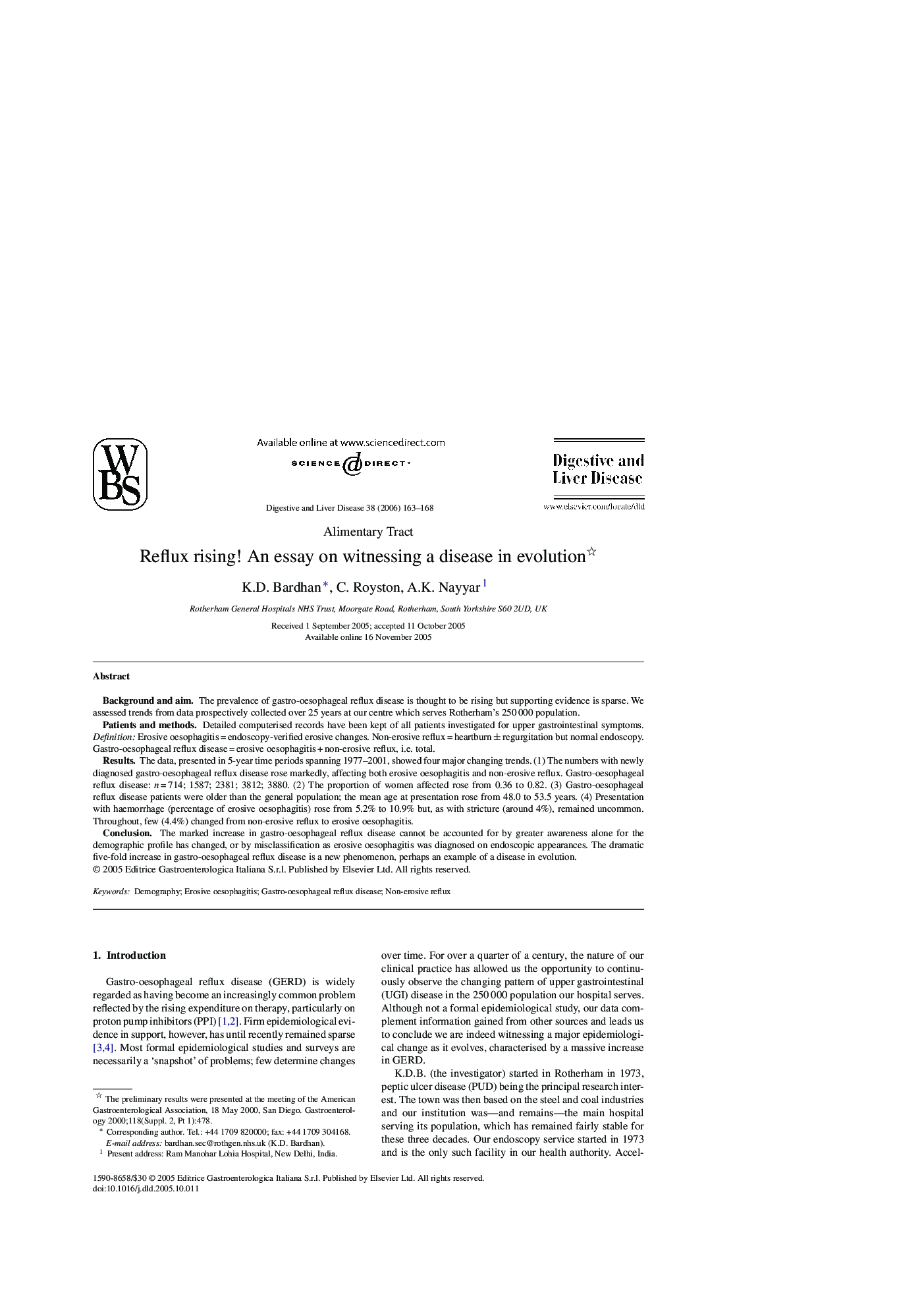| Article ID | Journal | Published Year | Pages | File Type |
|---|---|---|---|---|
| 3266665 | Digestive and Liver Disease | 2006 | 6 Pages |
Background and aimThe prevalence of gastro-oesophageal reflux disease is thought to be rising but supporting evidence is sparse. We assessed trends from data prospectively collected over 25 years at our centre which serves Rotherham's 250 000 population.Patients and methodsDetailed computerised records have been kept of all patients investigated for upper gastrointestinal symptoms. Definition: Erosive oesophagitis = endoscopy-verified erosive changes. Non-erosive reflux = heartburn ± regurgitation but normal endoscopy. Gastro-oesophageal reflux disease = erosive oesophagitis + non-erosive reflux, i.e. total.ResultsThe data, presented in 5-year time periods spanning 1977–2001, showed four major changing trends. (1) The numbers with newly diagnosed gastro-oesophageal reflux disease rose markedly, affecting both erosive oesophagitis and non-erosive reflux. Gastro-oesophageal reflux disease: n = 714; 1587; 2381; 3812; 3880. (2) The proportion of women affected rose from 0.36 to 0.82. (3) Gastro-oesophageal reflux disease patients were older than the general population; the mean age at presentation rose from 48.0 to 53.5 years. (4) Presentation with haemorrhage (percentage of erosive oesophagitis) rose from 5.2% to 10.9% but, as with stricture (around 4%), remained uncommon. Throughout, few (4.4%) changed from non-erosive reflux to erosive oesophagitis.ConclusionThe marked increase in gastro-oesophageal reflux disease cannot be accounted for by greater awareness alone for the demographic profile has changed, or by misclassification as erosive oesophagitis was diagnosed on endoscopic appearances. The dramatic five-fold increase in gastro-oesophageal reflux disease is a new phenomenon, perhaps an example of a disease in evolution.
